Menu

Teething is a natural process during which your baby’s first set of teeth, known as primary or baby teeth, emerge through the gums.
This phase can be challenging for parents as babies may experience discomfort and become unsettled during teething.This guide discusses the common signs and symptoms and tips to comfort your little one during this possibly uncomfortable time.
Teething symptoms typically manifest a few days or weeks before the tooth emerges through the gum. Common signs include:

Teething can make your baby more sensitive, leading to increased fussiness or irritability. The discomfort caused by emerging teeth can affect their mood, making them more prone to being upset or irritable than usual. It’s a natural response to the physical changes in their gums during this developmental phase.

Excessive drooling is frequently linked to teething, representing the body’s natural response to the emerging teeth breaking through the gums. The increased saliva production is a common reaction during this developmental stage, helping to lubricate the gums and facilitate the process of tooth eruption.
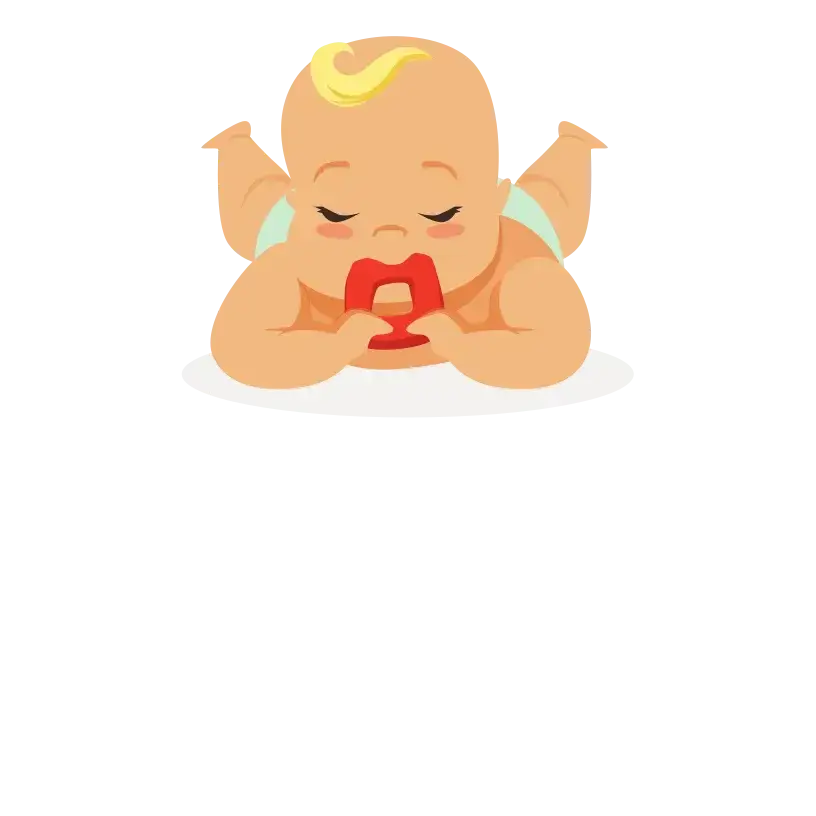
To ease the pressure on their gums during teething, babies may develop a habit of chewing on objects or biting. This instinctual behaviour serves as a coping mechanism, relieving them as they navigate the discomfort associated with emerging teeth. Providing safe teething toys can be a constructive way to address this natural process.

The teething process can be visually apparent as the gums surrounding the emerging teeth may show signs of redness and swelling. This visible change is a common indicator that the teeth push through, causing temporary inflammation in the surrounding gum tissue.
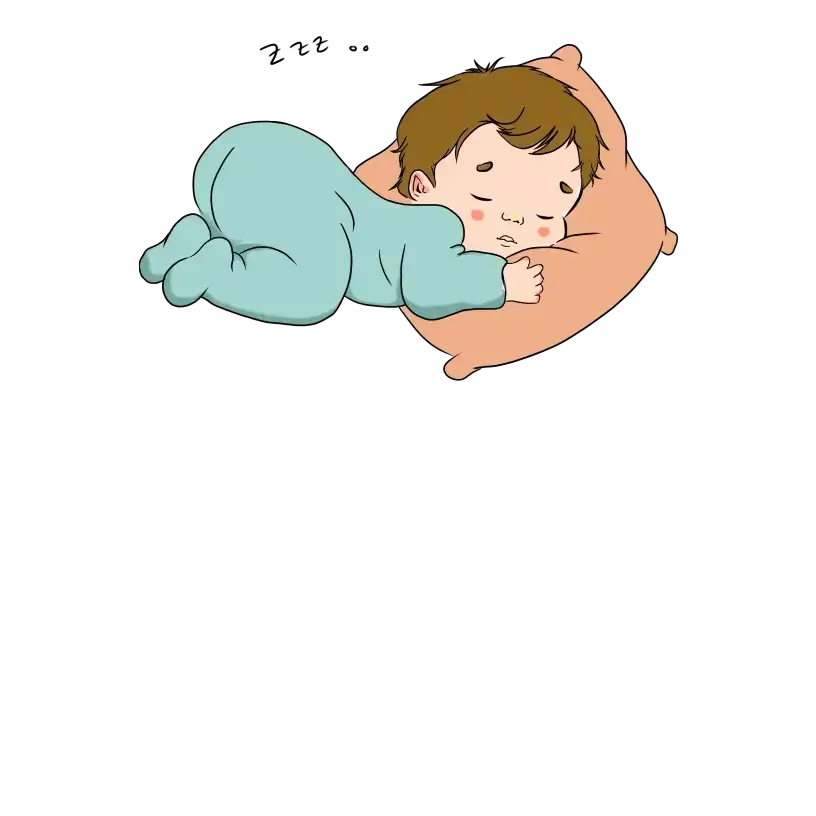
Teething discomfort can interfere with your child’s sleep, changing their usual sleeping patterns. The pain and irritation from emerging teeth may make it challenging for babies to settle into their regular sleep routines, causing disruptions such as frequent waking during the night or difficulty falling asleep.
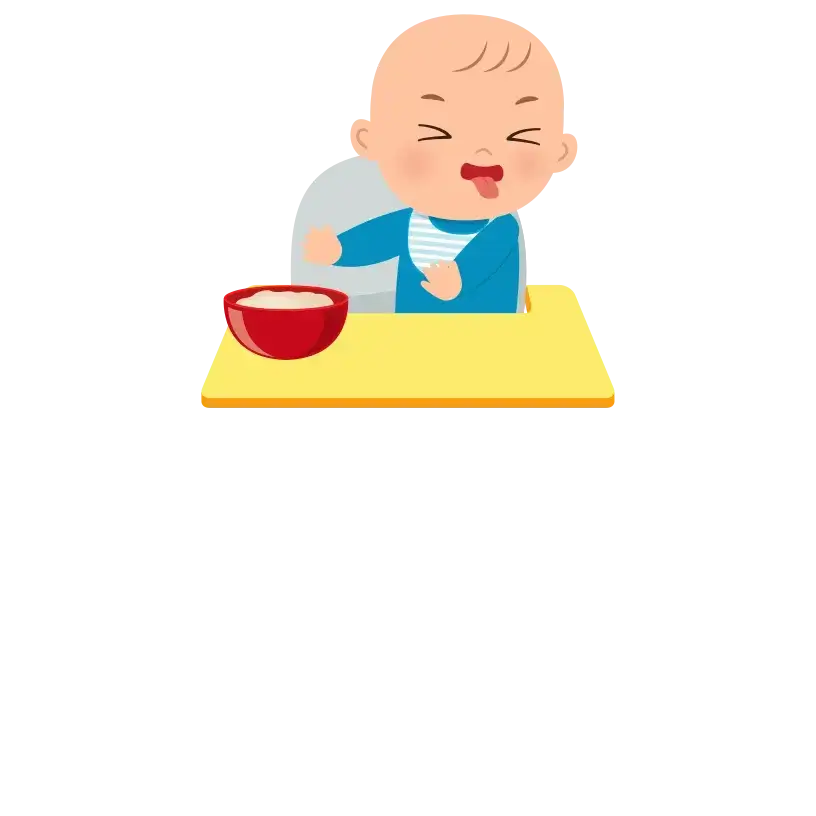
Teething can cause your child to lose interest in food, decreasing appetite temporarily. The discomfort in their gums may make eating less appealing during this phase. You must offer softer or soothing foods and ensure proper hydration to navigate this temporary change in your baby’s eating habits.

Teething pain can extend beyond the gums, causing your baby to pull or rub their ears to alleviate discomfort. The interconnected nerve pathways between the gums and ears can lead to referred pain, making your baby instinctively seek relief by touching or tugging at their ears during teething.
A mild increase in body temperature of less than 38°C can sometimes accompany teething in your baby. The emerging teeth and the associated gum irritation may lead to a slight elevation in body temperature, but it’s usually not considered a fever. This low-grade temperature is a common response to the teething process.

While these are common signs, each child may experience teething differently. Teething is typically not linked to illness. You should consult your child’s paediatrician if your baby shows symptoms like coughing, rashes, diarrhoea, vomiting, seizures, high fever or if teething symptoms persist.

Teething can make your baby more sensitive, leading to increased fussiness or irritability. The discomfort caused by emerging teeth can affect their mood, making them more prone to being upset or irritable than usual. It’s a natural response to the physical changes in their gums during this developmental phase.

Excessive drooling is frequently linked to teething, representing the body’s natural response to the emerging teeth breaking through the gums. The increased saliva production is a common reaction during this developmental stage, helping to lubricate the gums and facilitate the process of tooth eruption.

To ease the pressure on their gums during teething, babies may develop a habit of chewing on objects or biting. This instinctual behaviour serves as a coping mechanism, relieving them as they navigate the discomfort associated with emerging teeth. Providing safe teething toys can be a constructive way to address this natural process.

The teething process can be visually apparent as the gums surrounding the emerging teeth may show signs of redness and swelling. This visible change is a common indicator that the teeth push through, causing temporary inflammation in the surrounding gum tissue.

Teething discomfort can interfere with your child’s sleep, changing their usual sleeping patterns. The pain and irritation from emerging teeth may make it challenging for babies to settle into their regular sleep routines, causing disruptions such as frequent waking during the night or difficulty falling asleep.

Teething can cause your child to lose interest in food, decreasing appetite temporarily. The discomfort in their gums may make eating less appealing during this phase. You must offer softer or soothing foods and ensure proper hydration to navigate this temporary change in your baby’s eating habits.

Teething pain can extend beyond the gums, causing your baby to pull or rub their ears to alleviate discomfort. The interconnected nerve pathways between the gums and ears can lead to referred pain, making your baby instinctively seek relief by touching or tugging at their ears during teething.
A mild increase in body temperature of less than 38°C can sometimes accompany teething in your baby. The emerging teeth and the associated gum irritation may lead to a slight elevation in body temperature, but it’s usually not considered a fever. This low-grade temperature is a common response to the teething process.

While these are common signs, each child may experience teething differently. Teething is typically not linked to illness. You should consult your child’s paediatrician if your baby shows symptoms like coughing, rashes, diarrhoea, vomiting, seizures, high fever or if teething symptoms persist.
Every baby has their schedule. Some are born with teeth; others begin teething before 4 months or after 12 months. However, the majority typically start teething around 6 months and by the age of 2 to 3 years, most children will have all of their primary teeth, also known as milk teeth.
In the initial teething phase, the lower central incisors, positioned at the bottom front of the mouth, are usually the first teeth to emerge.
This typically occurs between 5 to 7 months, playing a fundamental role in your baby’s ability to bite and chew as they begin their dental development journey. Following closely, the upper central incisors appear around 6 to 8 months, contributing to your baby’s biting and chewing capabilities and marking another crucial stage in their dental growth.
As teething progresses, additional teeth emerge to enhance your baby’s developing smile further. Around 9 to 11 months, the top lateral incisors come into play, complementing the top front teeth, while the bottom lateral incisors follow suit around 10 to 12 months, contributing to a symmetrical smile.
The emergence of the first molars at 12 to 16 months marks a pivotal stage, expanding your baby’s dental structure and enhancing their ability to grind and chew food effectively.
The canines appear between 16 to 20 months, aiding in biting and tearing food. Finally, the second molars complete the primary set of molars around 20 to 30 months, positioned at the back of the mouth for efficient chewing and grinding.
This marks a significant milestone in your baby’s dental development, showcasing the gradual progression from the first emerging incisors to the final molars.
When your baby is teething, it can be tough for both of you. But there are simple ways to help ease their discomfort. Here are some tips to make this teething phase easier for your little one.

Teething toys are a great way to offer relief to your teething baby. Choose toys specifically designed for teething, ensuring they are safe and free from small parts that could be a choking hazard. Chill the teething toys in the refrigerator (not the freezer) before giving them to your baby. The coolness of the toy can help soothe your baby’s gums and provide a comforting sensation as they chew on it. Supervising your child while using teething toys is essential to ensure their safety.

A gentle gum massage can offer relief when your baby is experiencing teething discomfort. Ensure your hands are clean before gently massaging their gums with your finger. This tactile and soothing approach helps alleviate some of the discomfort of teething. Be mindful of your baby’s cues and adjust the pressure accordingly, ensuring a comforting experience. Regularly washing your hands before this process helps prevent any potential irritation and maintains a hygienic environment during this soothing practice.

A chilled washcloth can be a simple yet effective remedy for teething discomfort. Start by dampening a clean washcloth, then chill it in the refrigerator. Once cooled, allow your baby to chew on the washcloth. The cold sensation provides a numbing effect on the gums, offering relief from teething pain. Always ensure the washcloth is clean, and supervise your baby during this activity to prevent choking hazards.

Introducing cold foods, not frozen, is a tasty way to ease teething discomfort for your baby. Offer items like chilled yoghurt or refrigerated fruit slices. The cool temperature provides a soothing effect on their gums and can be a refreshing experience. Ensure the foods are age-appropriate and cut into manageable pieces to avoid choking hazards.

Distracting your baby from teething discomfort can be effective. Engage them in different activities to shift their focus. This diversion helps ease their discomfort by redirecting attention and contributes positively to their overall mood during the teething phase. Finding enjoyable and engaging activities can make this period more manageable for you and your baby.
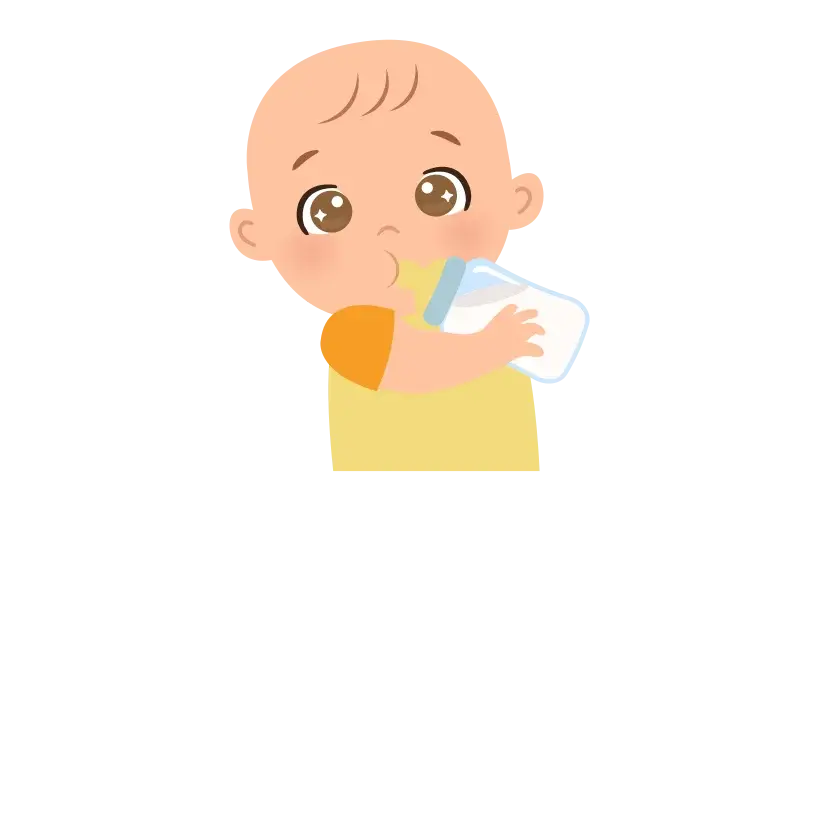
Keeping your baby well-hydrated is crucial during teething. Offer a variety of fluids such as water, breast milk, or formula to ensure they stay adequately hydrated. Hydration contributes to their overall well-being and can help soothe any irritability or discomfort associated with teething. Providing a mix of fluids gives you flexibility based on your baby’s preferences and dietary needs.

Offering your baby extra love and comfort can be incredibly soothing during teething discomfort. Embrace gentle cuddles and provide soothing words to reassure them. Sometimes, the comfort of your presence and the warmth of your affection can significantly ease their teething woes.
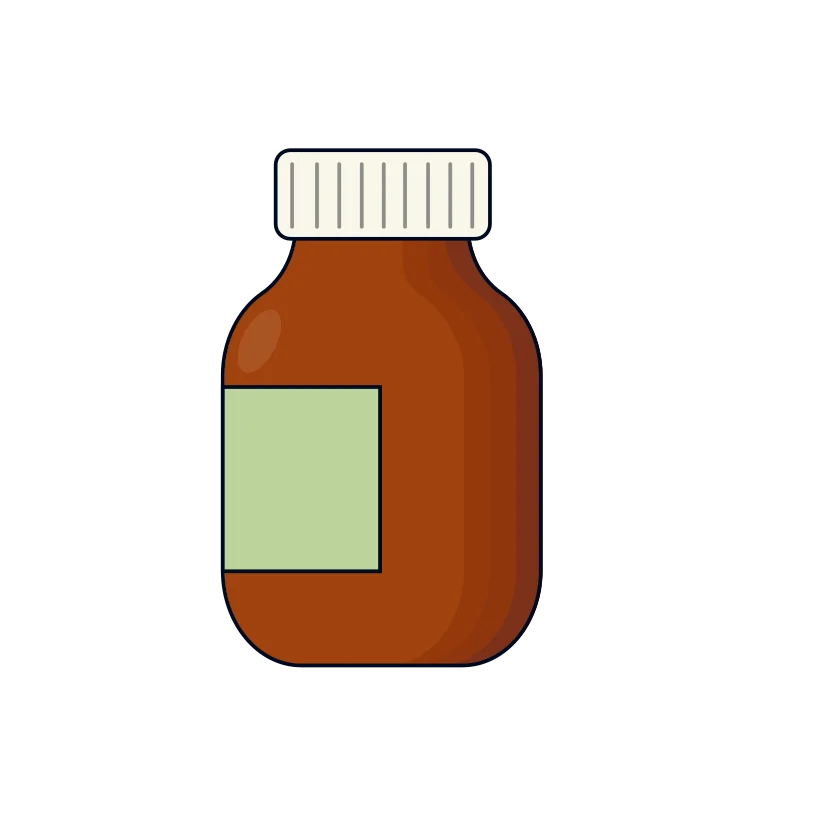
If your baby is uncomfortable during teething, consult your doctor before considering pain medications like acetaminophen or ibuprofen. Choose the medication based on your baby’s age and symptoms, and strictly follow the recommended dosage provided by your healthcare provider. Medication should be used cautiously and as a last resort under professional guidance.

If your baby is old enough for solid foods, offering safe and hard items to chew on can help relieve teething discomfort. Whole, solid vegetables like a peeled carrot or cucumber can be beneficial. However, monitoring your baby closely is crucial to ensure these foods do not pose a choking hazard.

Using a clean, dry bib or cloth under your baby’s chin can help prevent skin irritation caused by the increased drool during teething. This simple measure helps keep your baby comfortable by keeping their skin dry and minimizing the potential for irritation or chafing due to excessive drooling.

Teething toys are a great way to offer relief to your teething baby. Choose toys specifically designed for teething, ensuring they are safe and free from small parts that could be a choking hazard. Chill the teething toys in the refrigerator (not the freezer) before giving them to your baby. The coolness of the toy can help soothe your baby’s gums and provide a comforting sensation as they chew on it. Supervising your child while using teething toys is essential to ensure their safety.

A gentle gum massage can offer relief when your baby is experiencing teething discomfort. Ensure your hands are clean before gently massaging their gums with your finger. This tactile and soothing approach helps alleviate some of the discomfort of teething. Be mindful of your baby’s cues and adjust the pressure accordingly, ensuring a comforting experience. Regularly washing your hands before this process helps prevent any potential irritation and maintains a hygienic environment during this soothing practice.

A chilled washcloth can be a simple yet effective remedy for teething discomfort. Start by dampening a clean washcloth, then chill it in the refrigerator. Once cooled, allow your baby to chew on the washcloth. The cold sensation provides a numbing effect on the gums, offering relief from teething pain. Always ensure the washcloth is clean, and supervise your baby during this activity to prevent choking hazards.

Introducing cold foods, not frozen, is a tasty way to ease teething discomfort for your baby. Offer items like chilled yoghurt or refrigerated fruit slices. The cool temperature provides a soothing effect on their gums and can be a refreshing experience. Ensure the foods are age-appropriate and cut into manageable pieces to avoid choking hazards.

Distracting your baby from teething discomfort can be effective. Engage them in different activities to shift their focus. This diversion helps ease their discomfort by redirecting attention and contributes positively to their overall mood during the teething phase. Finding enjoyable and engaging activities can make this period more manageable for you and your baby.

Keeping your baby well-hydrated is crucial during teething. Offer a variety of fluids such as water, breast milk, or formula to ensure they stay adequately hydrated. Hydration contributes to their overall well-being and can help soothe any irritability or discomfort associated with teething. Providing a mix of fluids gives you flexibility based on your baby’s preferences and dietary needs.

Offering your baby extra love and comfort can be incredibly soothing during teething discomfort. Embrace gentle cuddles and provide soothing words to reassure them. Sometimes, the comfort of your presence and the warmth of your affection can significantly ease their teething woes.

If your baby is uncomfortable during teething, consult your doctor before considering pain medications like acetaminophen or ibuprofen. Choose the medication based on your baby’s age and symptoms, and strictly follow the recommended dosage provided by your healthcare provider. Medication should be used cautiously and as a last resort under professional guidance.
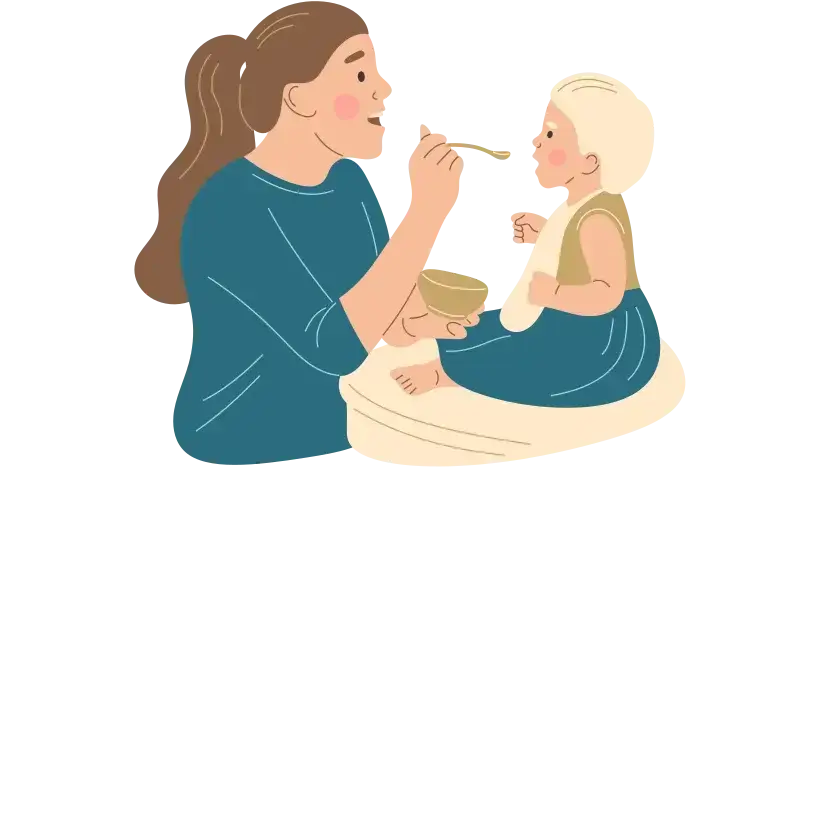
If your baby is old enough for solid foods, offering safe and hard items to chew on can help relieve teething discomfort. Whole, solid vegetables like a peeled carrot or cucumber can be beneficial. However, monitoring your baby closely is crucial to ensure these foods do not pose a choking hazard.

Using a clean, dry bib or cloth under your baby’s chin can help prevent skin irritation caused by the increased drool during teething. This simple measure helps keep your baby comfortable by keeping their skin dry and minimizing the potential for irritation or chafing due to excessive drooling.
Even though your baby’s teeth will eventually fall out, it’s important not to skip caring for them. These teeth are crucial in helping babies speak, chew their food, and pave the way for their permanent teeth. Taking care of your baby teeth ensures a smooth transition for the adult teeth that will follow. So, even though they’re temporary, keeping those little teeth healthy is a big deal for your baby’s overall oral health and future smile. Here are some tips:
While addressing toddler teething discomfort, avoiding certain treatments is important to ensure your child’s safety. Here are practices to steer clear of:
Teething gels or products containing benzocaine should be avoided, particularly for children under 2. Benzocaine, a numbing agent, poses potential risks, including a rare but serious condition called methemoglobinemia. This condition reduces the amount of oxygen carried through the bloodstream and can be harmful.
Homeopathic teething tablets might have inconsistent ingredients, making it important to consult a healthcare professional before using them. The variation in content raises concerns about their efficacy and safety. Seeking guidance from a healthcare professional ensures that any teething remedies you consider are appropriate and align with your child’s well-being.
Amber teething necklaces pose a choking hazard, and there’s no scientific evidence supporting their effectiveness. Due to potential risks, avoiding using these necklaces for teething relief is safer. Opt for alternative and evidence-based methods to ensure your child’s safety during teething.
While chilled items can provide soothing relief during teething, avoiding giving your child frozen objects or foods is essential. The hardness of frozen items may pose a risk to their gums and teeth. Opt for chilled but not frozen items, ensuring they are safe and appropriate for your child’s age to prevent potential harm.
Prescription lidocaine gels should be avoided for teething relief in infants. Infants are prone to swallowing these gels, and lidocaine can be toxic, affecting the nervous system and heart. The potential risks associated with lidocaine ingestion make it crucial to steer clear of such prescription gels for teething.
Teething gels or products containing benzocaine should be avoided, particularly for children under 2. Benzocaine, a numbing agent, poses potential risks, including a rare but serious condition called methemoglobinemia. This condition reduces the amount of oxygen carried through the bloodstream and can be harmful.
Homeopathic teething tablets might have inconsistent ingredients, making it important to consult a healthcare professional before using them. The variation in content raises concerns about their efficacy and safety. Seeking guidance from a healthcare professional ensures that any teething remedies you consider are appropriate and align with your child’s well-being.
Amber teething necklaces pose a choking hazard, and there’s no scientific evidence supporting their effectiveness. Due to potential risks, avoiding using these necklaces for teething relief is safer. Opt for alternative and evidence-based methods to ensure your child’s safety during teething.
While chilled items can provide soothing relief during teething, avoiding giving your child frozen objects or foods is essential. The hardness of frozen items may pose a risk to their gums and teeth. Opt for chilled but not frozen items, ensuring they are safe and appropriate for your child’s age to prevent potential harm.
Prescription lidocaine gels should be avoided for teething relief in infants. Infants are prone to swallowing these gels, and lidocaine can be toxic, affecting the nervous system and heart. The potential risks associated with lidocaine ingestion make it crucial to steer clear of such prescription gels for teething.
Typically, teething can be managed at home with soothing measures. However, if your child’s teething experience involves persistent and severe discomfort, the development of a high fever, excessive drooling leading to skin issues, or if your child refuses to eat or drink due to teething-related problems, it’s crucial to seek guidance from a healthcare professional.
Additionally, be attentive to any unusual symptoms or changes in behaviour during the teething process, such as disruptions in sleep patterns or prolonged irritability. Trust your parental instincts, and if you have concerns about your child’s well-being during teething, consulting with a doctor can provide reassurance and appropriate guidance.
Teeth grinding, known as bruxism, is common in toddlers, especially during teething or when they are in pain. This behaviour often happens during sleep, producing a distinct grinding sound.
Fortunately, most toddlers naturally outgrow this habit by the age of 6, typically coinciding with the emergence of their permanent teeth. This grinding usually resolves independently, so the likelihood of causing lasting damage is low. If you have lingering concerns about your toddler’s teeth grinding, discussing the matter with your child’s dentist for professional guidance and reassurance is advisable.
Tap the link in the bio to read more about what to do if your toddler grins her teeth.
Teething discomfort in babies often manifests a few days before a tooth emerges through the gum line. The level of discomfort can vary, with some babies experiencing more noticeable signs than others during the migration through the tissues beneath the gum line.
With their larger size and different shape, Molars are particularly prone to being associated with teething discomfort. The pressure and movement involved in the emergence of molars can contribute to increased sensitivity and discomfort for some children. Understanding these variations can help parents better support and comfort their child during this natural developmental process.
Teething is typically not directly associated with vomiting. If your child is experiencing vomiting along with other symptoms during teething, it’s essential to consult with a healthcare professional. Vomiting may indicate an unrelated issue and a medical evaluation can help determine the cause and appropriate course of action for your child’s well-being.
Yes, it’s normal for babies to refuse food while teething. The discomfort associated with emerging teeth can make the gums sensitive, leading some toddlers to lose interest in eating temporarily. The pressure and irritation from teething can affect their appetite. During this phase, it’s helpful to offer softer or soothing foods, such as chilled items, to make eating more appealing. Ensuring proper hydration is also essential. While this behaviour is a common response to teething, consult with your paediatrician if you have concerns or if the refusal to eat persists.
Teething pain for babies can be more pronounced at night, making evenings a time when the discomfort often feels more intense. This could be attributed to various factors, such as tiredness and the lack of daytime distractions, making the sensation of teething more prominent.
Additionally, the change in position from an upright to a lying-down posture during sleep might contribute to increased blood flow to the head, potentially intensifying the discomfort associated with emerging teeth. You need to be attentive during these nighttime hours and implement soothing measures to help ease teething pain for your baby.
While your baby is teething, avoiding foods that might worsen their discomfort is best. Salty foods can be like adding salt to a wound, making things more painful. Spicy foods may irritate their gums, so it’s a good idea to stick to milder options during teething. Citrus foods are acidic and can bother their gums, so consider offering vegetables instead. Choosing softer and less irritating foods can help make your baby more comfortable while teething.
Teething pain can get worse if bacteria in the mouth cause inflammation around the erupting teeth. Keeping the gums clean is vital to prevent this. Regularly clean the gums of your baby or toddler to minimize the risk of infection and reduce teething discomfort. Good oral hygiene during teething is crucial for overall gum health and to ensure a more comfortable experience for your little one.
Distinguishing between an ear infection and baby teething can be challenging, as some symptoms overlap. Both conditions can cause increased fussiness and discomfort. However, signs like pulling or rubbing the ears are more indicative of teething, as teething pain can radiate to the ears. On the other hand, symptoms such as high fever, persistent crying, or changes in behaviour might suggest an ear infection. If you’re uncertain, it’s advisable to consult with your paediatrician for a proper diagnosis and guidance on the best course of action.
Teeth grinding, known as bruxism, is common in toddlers, especially during teething or when they are in pain. This behaviour often happens during sleep, producing a distinct grinding sound. Fortunately, most toddlers naturally outgrow this habit by the age of 6, typically coinciding with the emergence of their permanent teeth. This grinding usually resolves independently, so the likelihood of causing lasting damage is low. If you have lingering concerns about your toddler’s teeth grinding, discussing the matter with your child’s dentist for professional guidance and reassurance is advisable.
Teething discomfort in babies often manifests a few days before a tooth emerges through the gum line. The level of discomfort can vary, with some babies experiencing more noticeable signs than others during the migration through the tissues beneath the gum line. With their larger size and different shape, Molars are particularly prone to being associated with teething discomfort. The pressure and movement involved in the emergence of molars can contribute to increased sensitivity and discomfort for some children. Understanding these variations can help parents better support and comfort their child during this natural developmental process.
Teething is typically not directly associated with vomiting. If your child is experiencing vomiting along with other symptoms during teething, it’s essential to consult with a healthcare professional. Vomiting may indicate an unrelated issue and a medical evaluation can help determine the cause and appropriate course of action for your child’s well-being.
Yes, it’s normal for babies to refuse food while teething. The discomfort associated with emerging teeth can make the gums sensitive, leading some toddlers to lose interest in eating temporarily. The pressure and irritation from teething can affect their appetite. During this phase, it’s helpful to offer softer or soothing foods, such as chilled items, to make eating more appealing. Ensuring proper hydration is also essential. While this behaviour is a common response to teething, consult with your paediatrician if you have concerns or if the refusal to eat persists.
Teething pain for babies can be more pronounced at night, making evenings a time when the discomfort often feels more intense. This could be attributed to various factors, such as tiredness and the lack of daytime distractions, making the sensation of teething more prominent. Additionally, the change in position from an upright to a lying-down posture during sleep might contribute to increased blood flow to the head, potentially intensifying the discomfort associated with emerging teeth. You need to be attentive during these nighttime hours and implement soothing measures to help ease teething pain for your baby.
While your baby is teething, avoiding foods that might worsen their discomfort is best. Salty foods can be like adding salt to a wound, making things more painful. Spicy foods may irritate their gums, so it’s a good idea to stick to milder options during teething. Citrus foods are acidic and can bother their gums, so consider offering vegetables instead. Choosing softer and less irritating foods can help make your baby more comfortable while teething.
Teething pain can get worse if bacteria in the mouth cause inflammation around the erupting teeth. Keeping the gums clean is vital to prevent this. Regularly clean the gums of your baby or toddler to minimize the risk of infection and reduce teething discomfort. Good oral hygiene during teething is crucial for overall gum health and to ensure a more comfortable experience for your little one.
Distinguishing between an ear infection and baby teething can be challenging, as some symptoms overlap. Both conditions can cause increased fussiness and discomfort. However, signs like pulling or rubbing the ears are more indicative of teething, as teething pain can radiate to the ears. On the other hand, symptoms such as high fever, persistent crying, or changes in behaviour might suggest an ear infection. If you’re uncertain, it’s advisable to consult with your paediatrician for a proper diagnosis and guidance on the best course of action.
1. Food and Drug Administration. FDA Drug Safety Communication: FDA recommends not using lidocaine to treat teething pain and requires new Boxed Warning.
2. Food and Drug Administration. Safely Soothing Teething Pain and Sensory Needs in Babies and Older Children.
3. Kakatkar, G., Nagarajappa, R., Bhat, N., Prasad, V., Sharda, A. and Asawa, K., 2012. Parental beliefs about children’s teething in Udaipur, India: a preliminary study. Brazilian oral research, 26, pp.151-157.
4. Meer, Z. and Meer, A., 2011. Teething trouble and its management in children. Int J Dent Clin, 3(2), pp.75-7.
5. Memarpour, M., Soltanimehr, E. and Eskandarian, T., 2015. Signs and symptoms associated with primary tooth eruption: a clinical trial of nonpharmacological remedies. BMC Oral Health, 15(1), pp.1-8.
6. NHS. Baby teething symptoms
© Mindsmaking 2024